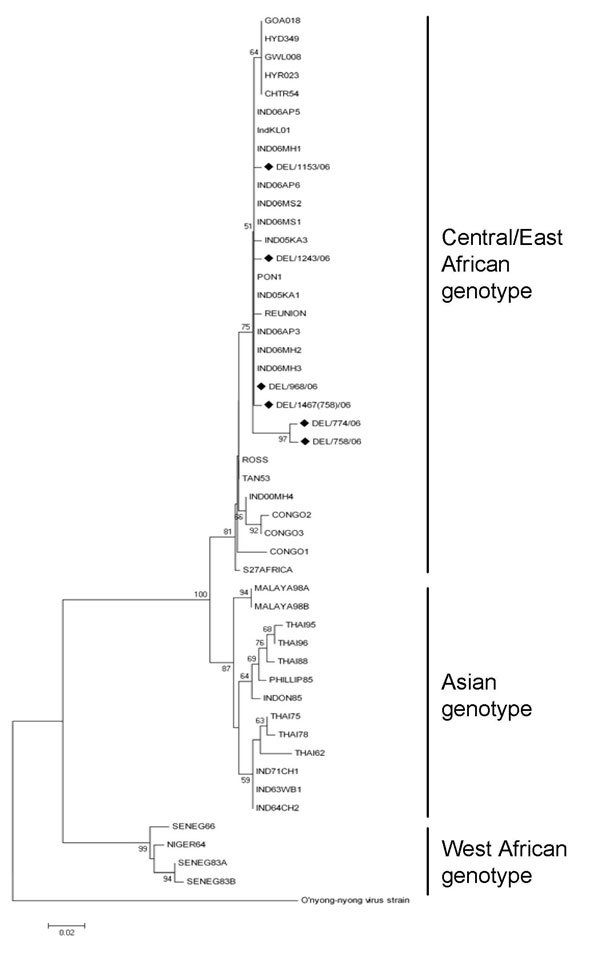Volume 15, Number 7—July 2009
Dispatch
Co-infections with Chikungunya Virus and Dengue Virus in Delhi, India
Figure 2

Figure 2. Phylogenetic analysis of partial envelop 1 (E1) gene sequences (294 bp) of chikungunya virus strains from the 2006 dengue outbreak in Delhi, India. Neighbor-joining tree was constructed by using E1 gene sequences from various chikungunya virus sequences. O’nyong-nyong virus (AF079456) was used as an outgroup. Percentage bootstrap support is indicated by the values at each node. Delhi strains are indicated by a diamond. Scale bar indicates nucleotide substitutions per site.
Page created: November 08, 2010
Page updated: November 08, 2010
Page reviewed: November 08, 2010
The conclusions, findings, and opinions expressed by authors contributing to this journal do not necessarily reflect the official position of the U.S. Department of Health and Human Services, the Public Health Service, the Centers for Disease Control and Prevention, or the authors' affiliated institutions. Use of trade names is for identification only and does not imply endorsement by any of the groups named above.